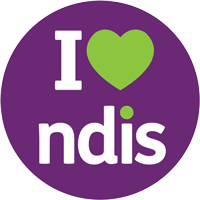Last year, if somebody told you that 2020 would be defined by a respiratory virus that kills over a million people, stifles the world’s economies, and sends stock markets into a dizzying spin, you may have dismissed them as a conspiracy theorist who watches too much YouTube.
Sadly, COVID-19 is our new reality, and just as people have had to adapt their lives to suit, businesses have done the same, especially airlines. Coronavirus air travel is here to stay for the foreseeable future, and in this article, we’ll be exploring what it might look like for Australians.
Fewer international flights, and more domestic flights
Australia has dealt with the COVID pandemic exceptionally well, offering a glimmer of hope for its domestic airlines. If we continue to keep COVID cases low, state borders will remain open, and airlines are likely to focus their efforts on domestic travel. You may start to see more coronavirus flights for their most profitable routes—Melbourne to Sydney, Sydney to Brisbane, and Melbourne to Brisbane3 – which will also help to promote domestic tourism in Australia.
Other countries haven’t dealt with COVID as well. As they continue to be overwhelmed, their borders remain shut to international travellers, blocking well-worn flight routes, and costing airlines millions of dollars. Until other countries reach the other side of the pandemic, there’ll be fewer international flights, and those that are available will be expensive. We are likely to see “coronavirus corridors” between certain countries, but flights will be few and far between, which will continue to limit holiday destinations for people desperate for a holiday abroad. Industry analysts predict flights to return to around 40% capacity by the end of the year, leaving us with much less choice3.
Higher prices
Airlines will need to recoup the staggering amounts of money they’ve lost due to COVID, and one of the easiest ways is to increase prices. We’re unlikely to see the discounted fares that we’re used to—instead, prices will return to “normal,” which is more than we’re used to paying. IBISWorld industry analyst Tom Youl predicts that “Airfares are likely to remain in that moderate to high price range in the next 12 to 18 months3.”
For those in financial strife due to the COVID pandemic, the higher prices that come with Coronavirus air travel will make it more difficult for them to take a holiday.
Fewer airlines
Coronavirus and flying haven’t mixed well—COVID-19 has caused over 40 airlines to fail this year, with more on the way1. Australia’s Tigerair is one of these casualties, and Virgin went through administration earlier in the year, but has since been sold to US private equity firm, Bain Capital, which has vowed to keep the airline running2. As expected, both Qantas and Jetstar’s stocks plummeted earlier in the year, but they are launching more flights now that the borders are opening up.
Health precautions
To curb the spread of the virus, a number of health precautions may be taken by airlines. Coronavirus air travel may include the following changes to how we fly:
- Masks on flights—masks help to reduce the spread of the virus4, and you may be expected to wear them on flights (especially international flights).
- Temperature checks—fever is a common symptom for COVID, so you may find your temperature being taken before and after boarding a flight.
- Less food—as airline staff try to limit the number of “touchpoints” on their flights, meals may be rescinded, and drinks reduced. As a result, business class might start to feel like economy5.
- No magazines—magazines are another non-essential touchpoint that can spread COVID, and airlines may start to remove them.
Planes may be busier
A full plane is a profitable plane. As airlines try to recoup their losses, they will be keen to fill up their planes as much as possible despite a packed plane being an excellent way to spread COVID. But this will depend on their ability to predict demand for flights. If they have a good estimation of the number of people who want to fly during the COVID pandemic, they will know how many flights need to be scheduled, and planes will be much busier.
New, untested routes
With domestic flights a focus for Australian airlines, they may start to experiment with new routes to see what’s profitable. Opening up new routes is an effective way to test market demand, something that Australian airlines were already doing before the COVID pandemic3. For those desperate for a holiday, these new routes may create exciting new possibilities that wouldn’t have been considered otherwise, allowing people to broaden their horizons, stimulate local economies, and help the country claw its way out of the recession.
References
- #1 Abigail Ng, 2020, Over 40 airlines have failed so far this year — and more are set to come, CNBC
- #2 Nassim Khadem, 2020, Bain Capital becomes the new owner of Virgin Australia after creditors agree to $3.5 billion deal, ABC News
- #3 Nick Sas, Amy Bainbridge, 2020, Future of flying in coronavirus Australia is all domestic, as Qantas, Virgin and Rex look local, ABC News
- #4 Lynne Peeples, Face masks: what the data say, Nature
- #5 Angus Whitley and Anurag Kotoky, 2020, Covid-19 makes flying business class feel more like economy, Traveller

